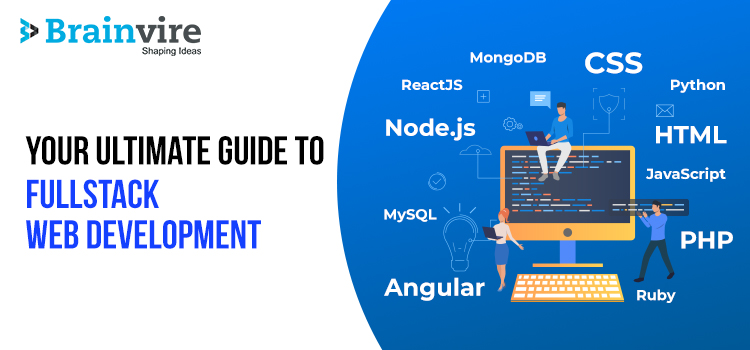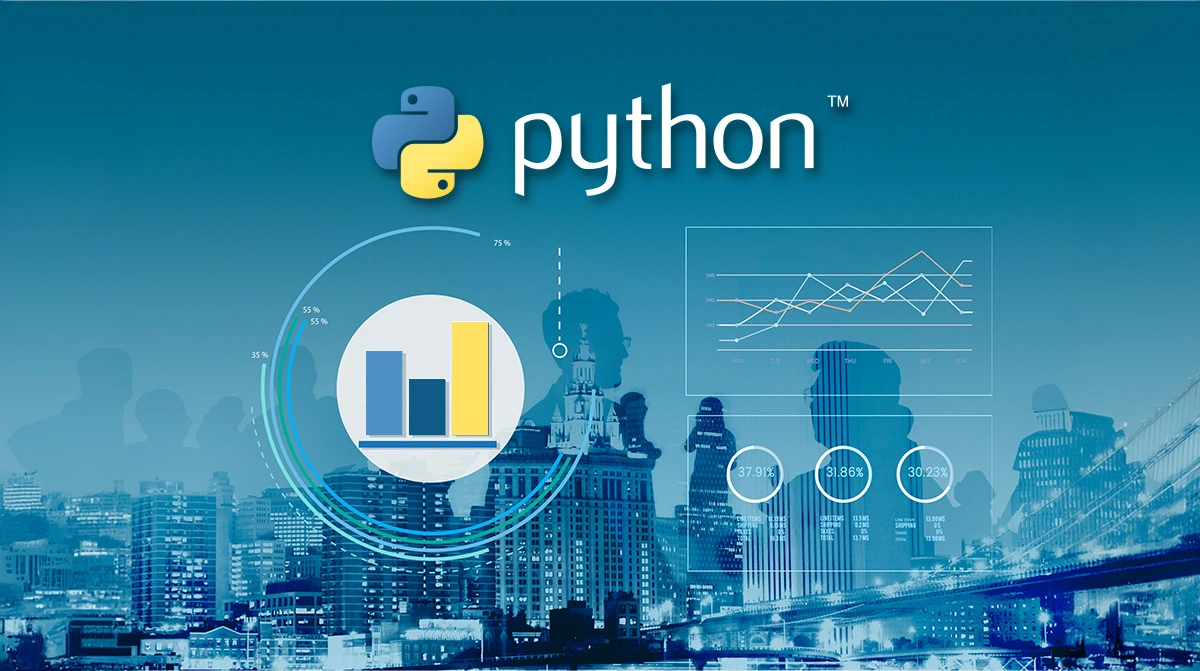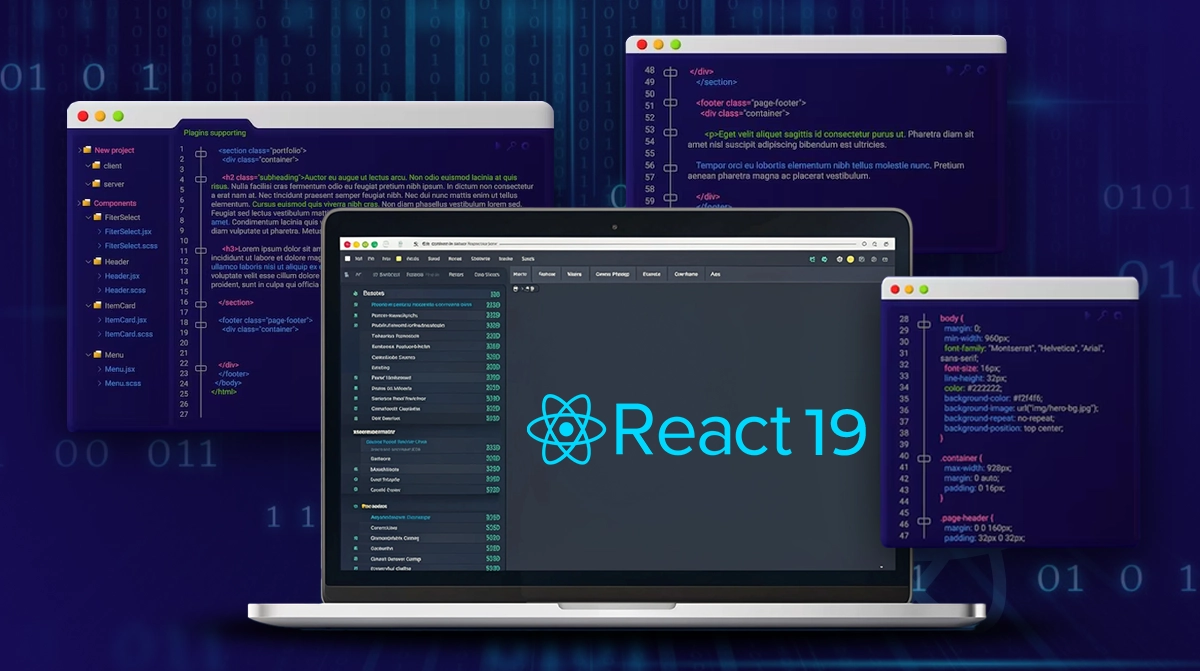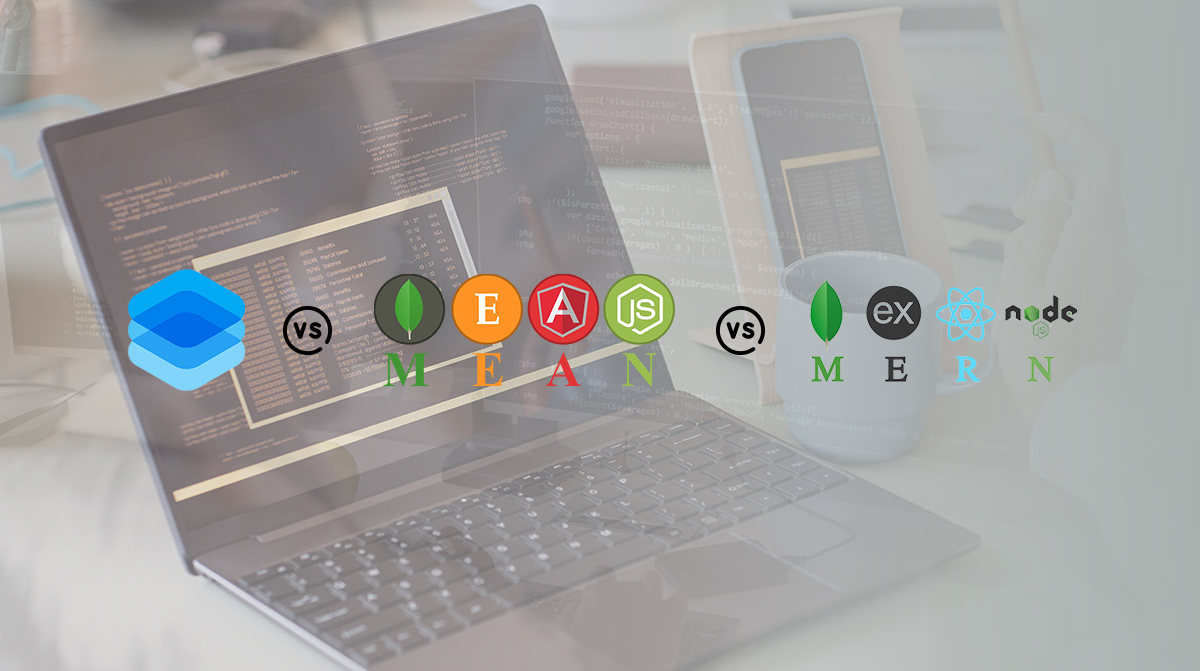
Full-stack developers. Whether you are looking to hire or become one, there is a lot of confusion surrounding this domain. In fact, I know people who confuse full-stack developers with senior developers.
Owing to the diverse technology needs and complexities, almost every business wants to hire full-stack developers in the market. On the other hand, most IT professionals, who know more than four languages, consider themselves a full stack developer. This is proved by the research of Stack Overflow and the same is depicted in the graph below.
The aim of this article is to acquaint you with the different facets of full-stack development services and also shed light on its benefits. Once you are clear with these aspects, then using transient technology to develop better things will become second nature for you.
Let’s dive right in!
Who is a Full Stack Development Professional?
‘Full-stack’ literally means a combination of everything that is required to develop, test, and deploy a web application. A full-stack development professional is the one who has sound technical knowledge of each and every aspect of development, be it front end, back end, various operating systems or other details of the technology. These people are usually termed “developer generalists” in the industry.
It can be very well said that this stack of developers can create any complex application from scratch, and understand how technical layers interact with each other. Thus, opting for full-stack development services is a good idea, especially if you are an emerging startup. You will be guided well through the process.
What Does a Full Stack Developer Know?
Everything. By ‘everything,’ I mean all the intricacies of web development. This includes, but is not limited to, frontend and backend frameworks.
We’ll start with the basics and then cover some of the most commonly used programming languages. Thereafter, you can explore the details of frontend and backend frameworks. This will prevent you from getting lost in the web development jungle.
The Basics
Your web development career will usually kickstart with and revolve around HTML and CSS. And these things are the basis for everything else.
Hypertext Markup Language (HTML) is the foundation of every website you’re working on. Through HTML, you’re defining and structuring the content of a website by using a simple markup syntax.
Cascading Style Sheets (CSS) is a simple way of adding style to your websites. For example, you can play around with the fonts and colors and make the overall layout look better.
Programming Languages
JavaScript
You may view JavaScript as the building block for the dynamic features present on your website. This language is an implementation of the underlying ECMAScript specification. Most of the front-end (Angular, React, Vue.js) and the back-end frameworks (Node.js) is based on JavaScript.
To begin with, you can concentrate on the basics of the JavaScript language. Subsequently, you will be able to grasp the more advanced features such as asynchronous functions, shared memory, and atomic operations.
TypeScript
The popularity of TypeScript is associated with the rise of Angular. If you are willing to learn Angular, then you should definitely try TypeScript as well.
TypeScript is an addition to JavaScript and both are used together to enable features like type checking. You will get an excellent tooling kit, especially if you work with code editors like Visual Studio Code.
Python
Python covers a wide range of use cases. For example, you can implement command-line scripts, GUI applications, and web applications. Furthermore, this programming language is currently being used in scientific computing.
Along with learning Python, you should also explore Python web programming frameworks like Django or Flask. They will help you in the development process.
Frontend Framework
Learning a framework and its associated concepts require a profound understanding of the underlying technology stack (e.g. JavaScript). But once you get the hang of it, developing common functionality will get easier and faster.
Now, let’s look at some of the trending front-end frameworks.
Angular
The first one in this list, Angular is a framework that builds client applications in HTML and JavaScript / TypeScript. It combines declarative templates, dependency injection, end-to-end tooling, and integrated best practices to solve development challenges.
The popularity of Angular over other frameworks seems undisputed. Look at the graph shown below.
React
React is a JavaScript library to develop interactive user interfaces. You just need to design simple views for each state in your application, and they will be updated and rendered in the right manner when your data changes. Declarative views make your code more predictable and easier to debug.
React is fully component-based. You can build encapsulated components that manage their own state, then compose them to make complex UIs. Since component logic is written in JavaScript instead of templates, you can easily pass rich data through your app and keep the state out of the DOM.
You can also create powerful single-page applications with React. Developing more complex web applications requires knowledge of Redux. It helps you to use central state management in your application, which makes data handling across components much easier.
Vue.js
The Vue framework is an ideal choice for smaller-sized projects. Moreover, it is extremely easy to learn and you can start seeing results quickly.
If we rewind back to the end of 2018, Vue evolved rapidly from a total of 78k stars on Github to 120k stars. Vue developers are in great demand nowadays as can be seen from the data below.
Backend Framework
Back-end frameworks are running on the back-end side (on the server) and are generating HTML, JSON (etc.) for your website in a dynamic way depending on the URL your user visits.
We’ll pick Node.js and Django for the sake of this article. However, you can learn additional backend frameworks to expand your knowledge base.
Node.js
Using Node.js, you can execute the JavaScript code at the back-end. It becomes more powerful when used together with the Express middle-ware. Knowing JavaScript thoroughly will let you understand the core concepts of Node quickly.
The popularity of Node.js development framework can be attributed to their productivity, scalability, and speed. Node.js allows you to write the same language for both your front-end and backend, thus saving you the stress of learning a new language for some simple implementation, and also helping you maintain the consistency in coding pattern.
Django
It can be considered a replica of Python. You will get the seven important benefits of Python once you start developing on Django. They are as follows:
- Excellent documentation
- SEO-optimized
- Versatile
- Extensively tested
- Scalable
- Secure
- Rapid development
BONUS KNOWLEDGE: Machine Learning
The knowledge of Machine Learning is not a prerequisite to becoming a full-stack developer. However, your career will always climb the ladder of success if you know such additional stuff.
A powerful combination of Machine Learning algorithms and programming languages like JavaScript will work wonders for your web application. You can start experimenting with new opportunities in your apps. Instead of deploying the Python code on the server to run your ML code, you can build single-page apps or even browser extensions that run interesting algorithms.
Frameworks like Tensorflow.js are facilitating the entry of Machine Learning into the field of web development.
Why Full Stack Development?
Now it’s time to understand how approaching a full-stack development company will benefit your company. Let’s get started with the benefits one by one.
Unique Codes
The developer or the agency would be able to create a unique code for multiple technologies. It will save countless hours of development, especially if the project is complex.
Versatility
You are promised versatility in terms of both technology and the workforce. The full-stack developer is skilled in both frontend and backend development. Also, they are well-versed in using different technologies for specific functions.
Back-end developers write prototype codes that connect your website to other content management systems (CMS). Front-end developers create codes using HTML, CSS, and JavaScript that controls the appearance and interactivity of a site in a browser. A full-stack developer carries out all of these tasks with ease and high accuracy.
Cost-effective
Most web applications are developed within a tight budget and full-stack development helps to maintain it. You don’t have to hire different developers for a single project. If calculated on an hourly basis, you would have saved millions of dollars when the project is nearing completion.
Timely Delivery
After cost, comes the time required to deliver your projects. Full-stack developers are excellent team players who can co-ordinate well and deliver the desired output. There will be no room left for inter-team confusion.
Expanded Scope of Services
The role of full-stack developers doesn’t start and end at web development. They work beyond that. For example, they can represent your company and product to stakeholders in conferences. You can rely on them for the MVP development from start to finish. Even if they join your team in the middle of the project, they can easily move the project forward towards brighter prospects.
Beyond handling the MVP development, they can also control the server-side and client-side of the application to streamline and fast track delivery.
Quick Troubleshooting
Yes, it’s true that full-stack developers can help you out with quality assurance and quality control of the design project. Experienced full-stack developers know every aspect and stage of website design and development. They are skilled enough to identify problems early on during the project. You can therefore expect long-term solutions from them that will ensure the optimal functioning of the website or application.
Unmatched Experience
Mastering frontend and backend frameworks along with their underlying languages cannot be a one-day or one-year job. It requires the highest level of determination and hard work. Only people with these qualities, amongst many others, will become a successful full-stack developer. So all this adds on to the experience of such developers and ultimately you are the one who benefits after hiring them.
Now, before I conclude this blog, let me tell you some interesting facts about web development as a whole.
- The origin of full-stack development goes as far as June 03, 2008.
- There are 710 coding languages around the world.
- The term “web development” was popularized by Tim O’Reilly and Dale Dougherty in late 2004. It was initially coined by Darcy DiNucci in 1999.
- There are 19 different types of developers.
- Today, there are over 23 million developers around the world, and by 2023 it would reach 27.7 million.
- By 2024 web developer job growth is expected to increase by 27%.
- A full-stack developer’s salary is as high as its demand in the job market, which is an average of $111,640 per year.
N.B.: These facts have been compiled from credible sources only.
Wrapping Up
Finally, you have your guide to full-stack development. If you happen to meet someone who is intrigued by the term ‘full-stack,’ just share this article with them. Their doubts will be put to rest. On a side note, if you are looking to unfold any innovation in your business, feel free to get in touch with us.
Related Articles
-
Unleashing Insights: Python’s Dominance in Data Analytics
Data is the lifeblood of modern businesses. To thrive, organizations need to extract meaningful insights from this vast resource. That’s where Python comes in. Python’s impact on data analytics is
-
Embrace the Future: Top Reasons to Upgrade to React 19 Now
Reactjs, also called React or React.js, is a popular open-source library for building user interfaces. It’s maintained by Meta (formerly Facebook) and a large community of developers. The beta launch
-
Full-Stack vs MEAN Stack vs MERN Stack- Which One to Choose for Web Development?
The development of mobile apps has taken itself to the next level. Together, many innovations are being used to create smartphone applications or web apps with extravagant characteristics. The word



